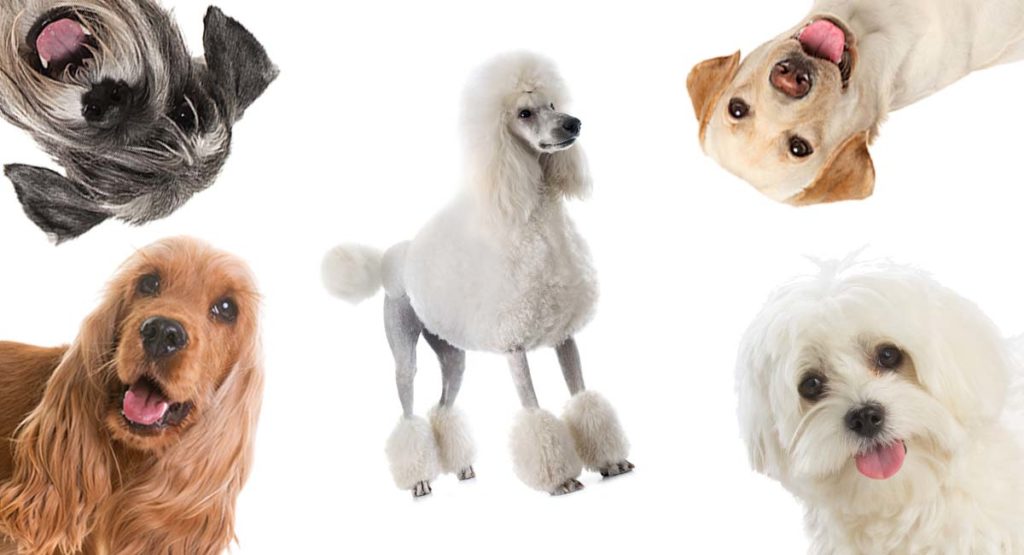
Poodle mix breed dogs all have one Poodle parent and one parent from a different breed. Often known as Doodles, Poodle mixes are among the most popular designer dogs worldwide. The highly intelligent, low shedding Poodle comes in three sizes: Standard, Miniature and Toy, so Poodle mixes can vary widely in weight and height.
From the tiny Yorkipoo to the family friendly Goldendoodle, there is a Doodle to suit most spaces and lifestyles. The most well known and popular Poodle mix is the Labradoodle followed closely by the Cockapoo and Maltipoo. There are even gentle giant Doodles such as the Bernedoodle.
Contents
- What’s so great about the Poodle mix breeds?
- Origins of the Designer Dog
- Are all Doodles hypoallergenic?
- Are Poodle mixes healthy dogs?
- The top 20 Poodle mixes
- Fifty fantastic Doodle links and reviews
Doodles need regular clipping and grooming to keep those curls out of the dog’s eyes and make sure that their fur doesn’t get matted. You can learn to do this at home, or pay to have your Doodle professionally groomed every few weeks. Here’s a patient Doodle having their face clipped:
Doodle Devotion: What’s So Great About The Poodle Mix?
We’ll look at the hypoallergenic coat of Doodles in a moment, but while that is one of the appeals of the Poodle mix, it is by no means the most important. The Poodle temperament and curls add some real canine charisma to the genetic mix in Poodle crossbreeds.
Compared with some of our other very popular breeds such as Labradors, Poodles are generally a little more reserved and calm. This makes them easier to manage, especially around seniors or small children. Their working background (the original Poodles were retrievers) means that they are both smart and easy to train. And while these features were not the catalyst for the arrival of the Doodle on the dog scene, they are the reason that the Poodle mix is thriving.
A Brief History Of Poodle Mixes
Poodle mixes are some of the most popular dogs in the world today. Look at any “best of” list, and you are likely to see at least a handful of Poodle mixes in top spots. So when did these dogs get so popular?
It all started back in the 1950s. A breeder crossed a Cocker Spaniel with a Miniature Poodle. And the Cockapoo was born. Then, in the 1980s, an Australian breeder named Wally Conlon crossed a Labrador Retriever with a Standard Poodle. He was employed by a Guide Dog organisation at the time and their aim was to create a guide dog that could live in families with allergies to dog dander.
Wally Conlon was had made the Labradoodle! and while this new breed was not a great success as a guide dog, it’s appeal as a companion dog took off rapidly. As word got out about this new so-called “hypoallergenic dog breed,” demand soared. The craze for hybrid or “designer” dogs began in earnest.
Let’s take a closer look at the hypoallergenic claims for these dogs and see if they match up.
Are Doodles Hypoallergenic?
We all shed our skins, old skin cells flake off the surface of our bodies and are replaced by new cells from underneath. Dogs and cats are no different. The term for all those old skin cells that flake off their bodies is dander. And it is dog dander that triggers allergies to dogs in some sensitive people.
We think of the allergy as being to hair or fur, but actually it’s not. The dander sticks to hair and when hair is shed, and floats around your home, there is dander attached to it. That’s what causes sneezing, eye watering and worse, in some people.
Dogs that have very curly hair, tend not to shed very much. That can be due to lack of undercoat, and partly because hair that is shed, gets trapped in among the tight curls and stays on the dog, instead of being deposited on your clothes and around your home. That’s why some people sensitive to dog dander are able to live with Poodles. But what about Poodle mixes? Do all Doodles inherit this low shedding tendency?
Do Doodles Shed?
Not all Poodle mixes are low shedding. It depends of the extent of the curl in their coats. Doodle puppies can vary from very tight curls, like their Poodle parent, to more relaxed curls, or even fairly straight fur. There are no guarantees even with a first generation cross.
And if you cross a Doodle with a Doodle, the results can be even more variable. The more Poodle in your Doodle, the tighter the curl! But again, there are no guarantees.
Generally speaking, a first generation Poodle cross – that’s a purebreed Poodle parent and one purebreed parent from a different breed – will have enough curl to shed less than the non-Poodle parent. But if you suffer badly from allergies to dogs, you really need to be cautious about assuming a Doodle will work for you. Do spend some time with other Doodles with the same parentage, before bringing a Poodle mix into your home.
Are Poodle Mixes Healthy?
Your own health is important, but what about the health of your canine friend? Poodle mixes are generally quite healthy. In fact the smaller Poodle breeds have a longer lifespan than many other breeds.
At one time dogs were judged at shows by matching their appearance against a standard. You could outcross with another breed and as long as the resulting puppies matched the breed standard, you could win at any dog show. The practice of closing breed registers, effectively banned outcrossing, and as a result many purebred pedigree dogs have suffered from prolonged inbreeding over several decades. This inbreeding has enabled the regular appearance of new diseases in our canine breeding stock.
Cross bred puppies like Doodles, come from a much wider gene pool and so some of the risks caused by inbreeding are reduced. However, there are still some diseases that are common to both parent breeds of some of our Poodle mixes. Which is why we have given you individual health information on the Poodle mix breeds listed below
Once you have decided on a Poodle mix puppy, you’ll need to narrow down your choices! Which is best? A Dorkie, a Chorkie, or a Shorkie? And how can you choose between a Schnoodle, a Whoodle and a Bordoodle? It’s tough, we agree. But, this list of the most popular Poodle mixes will help make it a bit easier!
Let’s take a detailed look at our top 20 Poodle mixes. Plus, links to tons of other great Poodle mix breeds!
Different Types of Poodle Mix – The Top 20
Today’s popular Poodle mixes come in all sizes! Lots of Poodle mixes actually make popular teddy bear dogs! We will look at all the sizes of Poodle mix you can get here.
From large Poodle mixes to standard Poodle mixes. Mini Poodle mixes to the teensiest toy Poodle mix dogs.
Poodle mix puppies to Poodle mix dogs. We have summaries of some of the best Poodle mixes below. So let’s get started!
Labradoodle
The Labradoodle, AKA the first well-known hybrid dog. This designer dog was popular right from the start.
After all, the Labrador Retriever, one of this dog’s purebred parents, has been the most popular pet dog in America for 26 years straight!
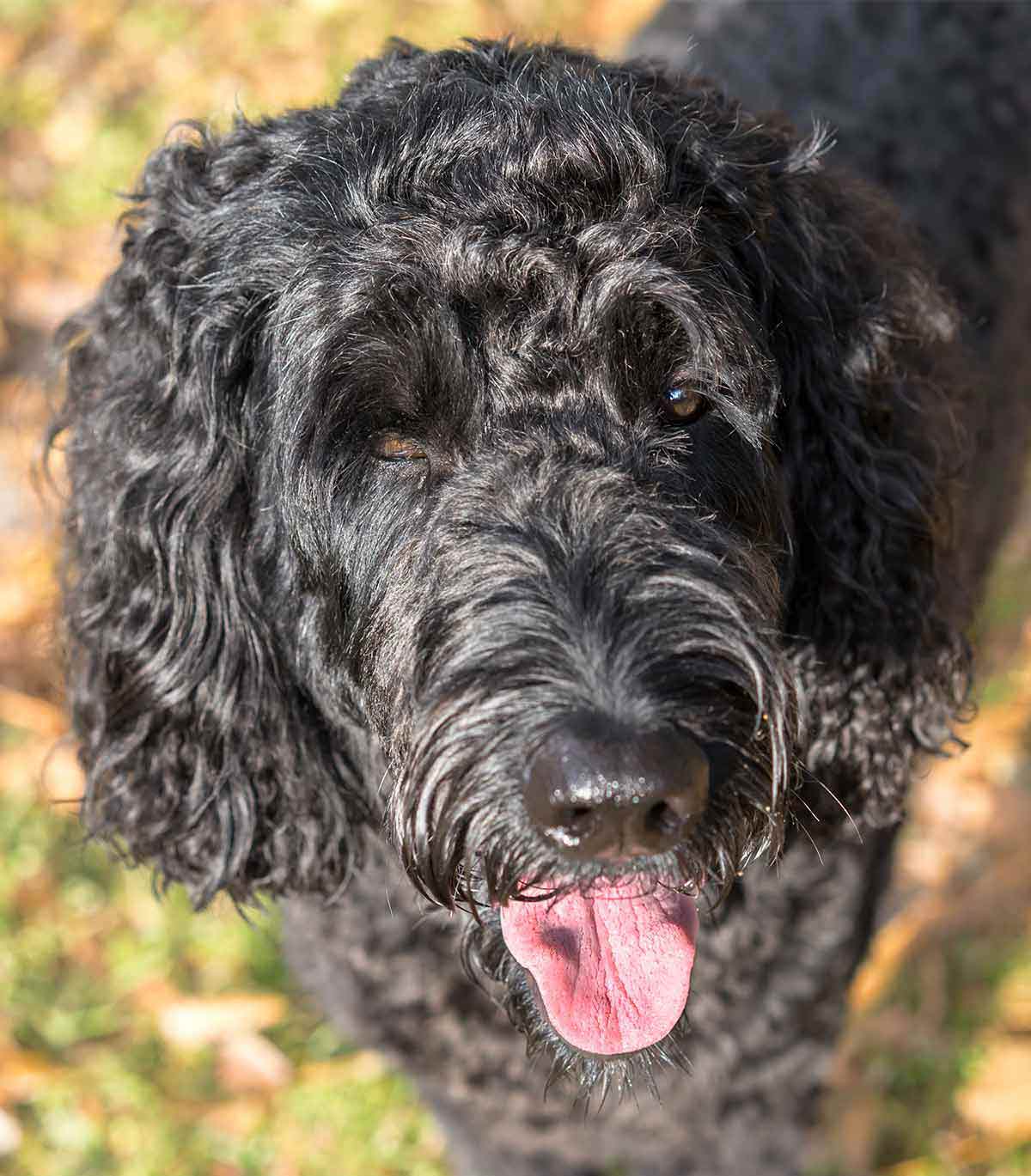
But, the Labradoodle popularity had some help! The movie called Marley & Me came out in 2008. Plus, one of its stars, Jennifer Aniston, was seen toting around an adorable puff of yellow curly fur – her Labradoodle.
That pretty much sealed the deal. The Labradoodle was here to stay.
As we mentioned above, it’s tough to predict how a mixed breed dog will turn out. So, to predict a Labradoodle’s appearance, take a look at the parent breeds!
Labradoodle Health
Another important point to look at is the health of this mixed breed. Mixed breeds can still be prone to the conditions that affect their parents. So, make sure you choose a reputable breeder who puts health first.
Some of the genetic issues that can affect the Labradoodle are:
- Hip and elbow dysplasia
- Epilepsy
- Eye problems
- Patellar luxation
- Heart problems
- Ear infections
Goldendoodle
The Goldendoodle is a cross between a Golden Retriever and a Poodle.
With this Poodle mix breed, you have the chance to enjoy a dog with two of the most highly desirable canine traits.
The Goldendoodle can inherit a low-shedding, near-hypoallergenic coat. But also a truly joyful, friendly, “family dog” temperament.
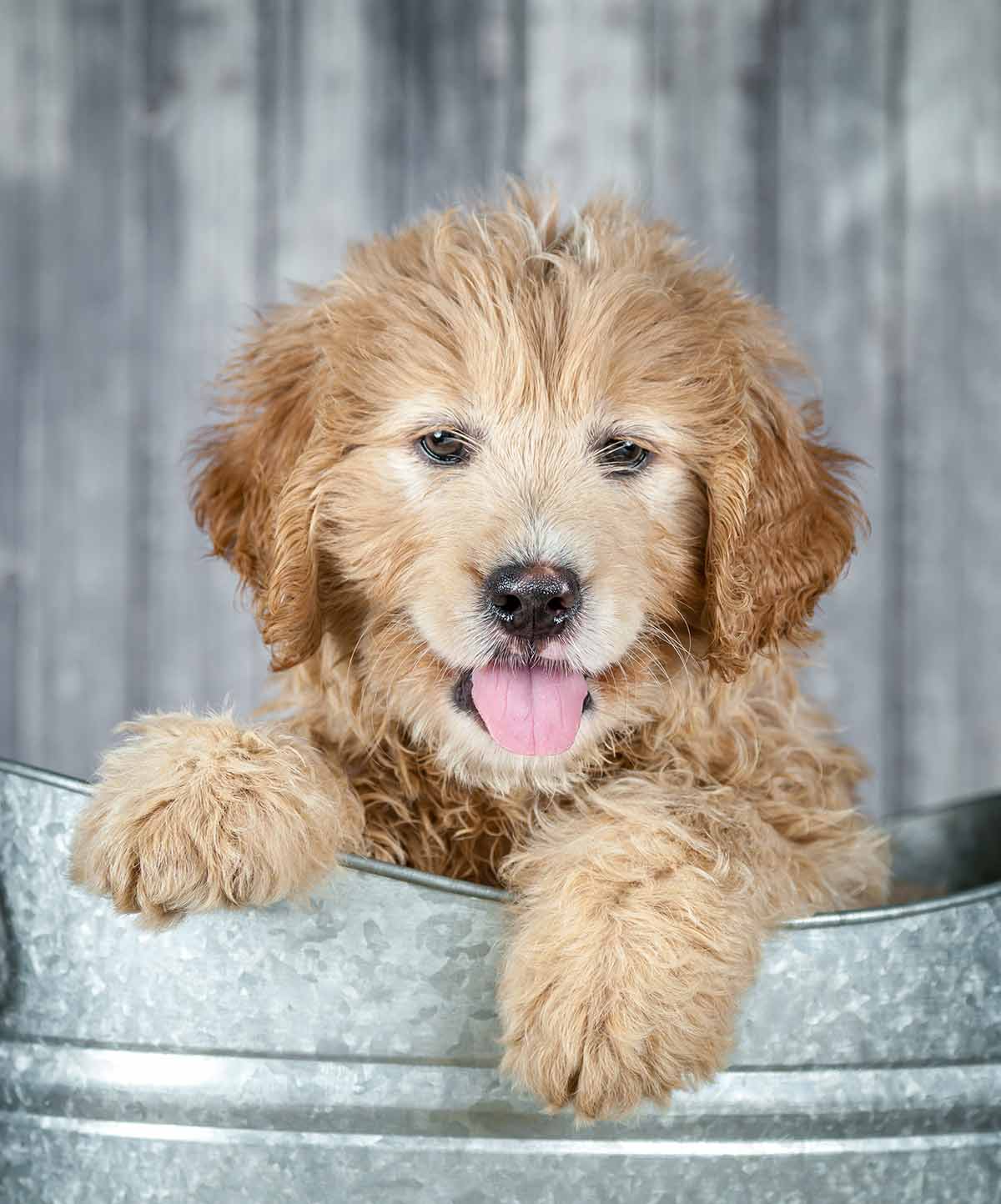
Goldendoodles can come in standard and mini sizes.
Goldendoodle Health
Like any mixed breed, you should become familiar with the health conditions that can impact the parent breeds.
Watch out for the following issues in Goldendoodles:
- Cancer
- Hip dysplasia
- Progressive retinal atrophy
- Bloat
Let’s move on to our third Poodle mix.
Cockapoo
The Cockapoo is the first true designer dog. But is also arguably the world’s most popular hybrid dog.
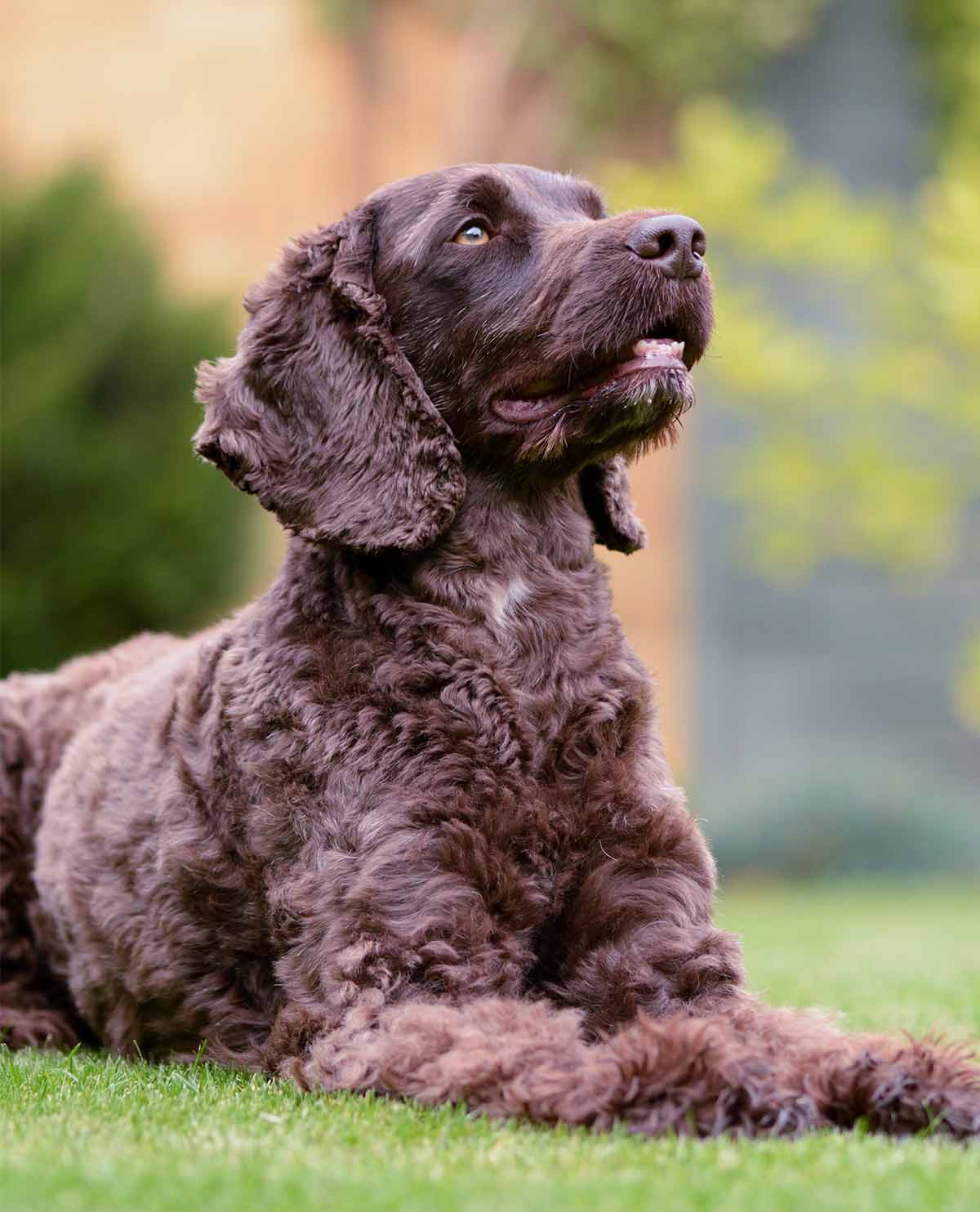
The Cockapoo has a history that dates back to the 1950s. So, it is also a more stable hybrid dog breed with many generations of successful crossbred litters under its belt.
They are also available in standard and toy sizes, just like the Goldendoodle.
Cockapoo Health
If you’re thinking of getting a Cockapoo, make sure to look out for the following health conditions.
- Lymphoma
- Eye diseases
- Intervertebral disc disease
- Heart problems
- Hip dysplasia
- Diabetes
- Blood diseases
You can read more about the potential health issues Cockapoos can inherit in our main Cockapoo guide linked in the table at the foot of this page.
Bichon Poodle
The Bichon Poodle, Poochon, or Bich Poo is a cross between a Bichon Frise and a Poodle. This is a smaller mix that uses either a miniature or a toy Poodle.

This adorable Poodle mix got its start in Australia in the 1990s.
This Poodle mix breed came out of the starting gate with an adorable, energetic personality. It instantly endeared them to everyone they met.
Bichon Poodle Mix Health
Unfortunately, like every other dog, the Bich Poo is prone to some health conditions. Take a look at some of them below:
- Progressive retinal atrophy
- Cataracts
- Gum infections
- Patellar luxation
- Hip dysplasia
- von Willebrand’s disease
- Sebaceous adenitis
Maltipoo
The Maltipoo is a happy cross between a Maltese and a Poodle. This is another one of the tiny Poodle mixes with big personalities.
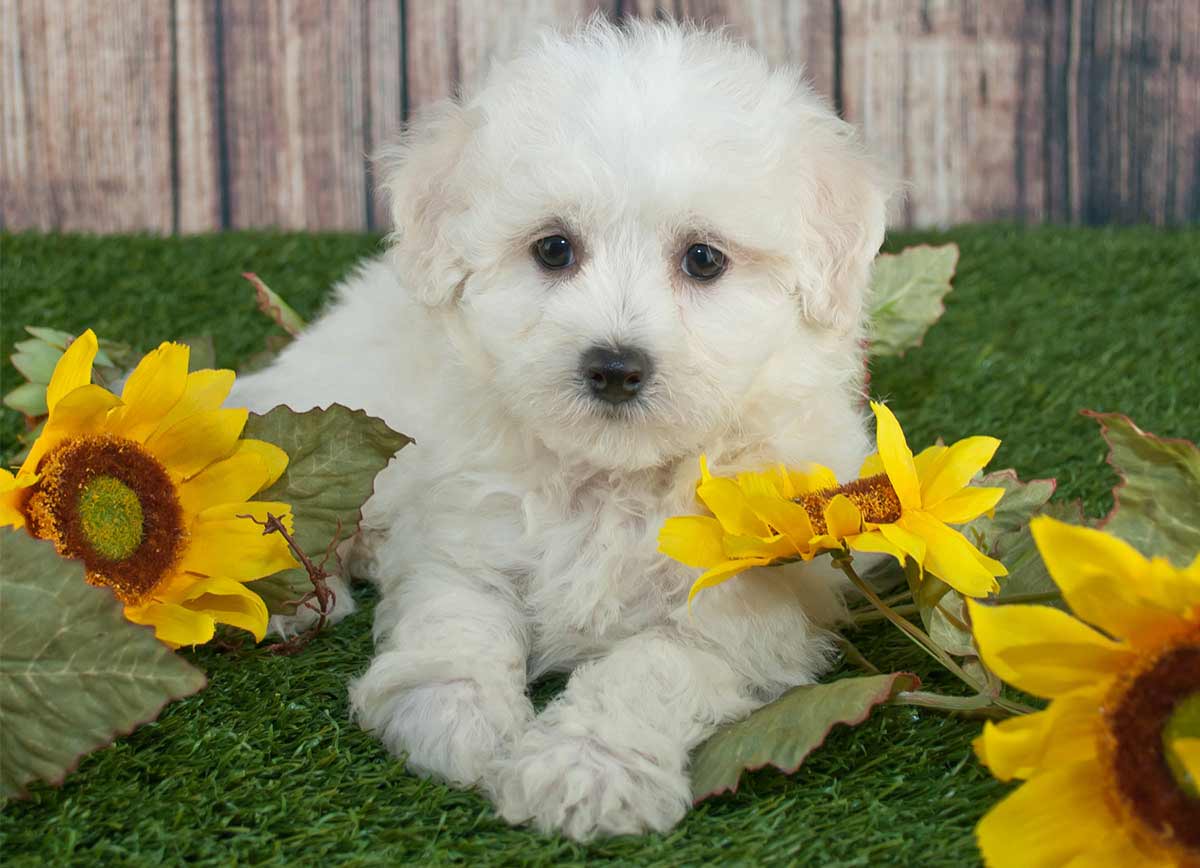
The Maltipoo is a quite new hybrid dog. But, both parent dogs are truly ancient dog breeds and well established each in their own right.
Maltipoo Health
So how does the Maltipoo health compare to the other Poodle mixes we’ve looked at?
If you choose this hybrid, make sure you watch out for the following issues, among others.
- Mitral valve prolapse
- Brain diseases
- Progressive retinal atrophy
- Epilepsy
- Joint issues
Teacup Maltipoos can suffer from some additional problems such as fragile bones, improper bone development, and soft spots on their skull.
Westiepoo
The Westiepoo is the product of crossing a West Highland Terrier with a Poodle. Usually a Miniature Poodle is used.
This dog is popular with families since the Westiepoo gets along really well with children.
Like a lot of mixed breeds, the Westiepoo’s origins are not clear. But breeders believe it first arose in the 1970s.
Westiepoo Health
Like any other Poodle mix, the Westiepoo is prone to some specific health problems.
We’ve listed a few of those below:
- Hypoadrenocorticism
- Bloat
- Atopic dermatitis
Pomapoo
A Pomapoo is a cross between a Pomeranian and a toy Poodle.
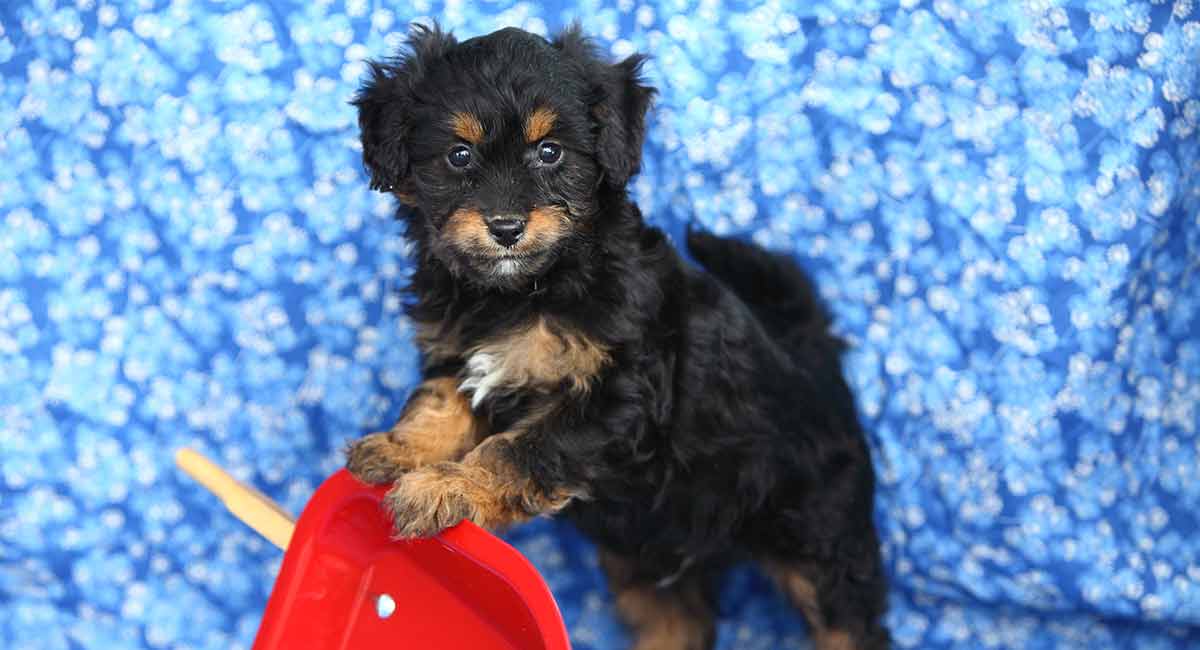
Both the Pomeranian and the Poodle are ancient and well-respected purebred dog breeds. They have loads of smarts, and great athletic skills.
The Pomapoo is likely to have a hybrid coat that is not hypoallergenic. Hybrid coats usually shed.
Pomapoo Health
Some of the health conditions a Pomapoo might be prone to include:
- Cataracts
- Progressive retinal atrophy
- Hypothyroidism
- Hip dysplasia
- Patellar luxation
- Tracheal collapse
- Dental problems
To read more about the health problems that a Pomapoo could inherit, check out the link in the table below.
Saint Berdoodle
A Saint Berdoodle is a cross between a Saint Bernard and a Poodle.
This type of the Poodle mixes may actually date all the way back to the 1880s.
Even when mixed with the Poodle’s natural regal reserve, the Saint Berdoodle is going to be a loving family dog.
So what can you expect in terms of health?
Saint Berdoodle Health
Like every other Poodle mix, there are some unfortunate health problems to be aware of. Take a look at some of them in our list below.
- Bloat
- Hip dysplasia
- Eye problems
- Overheating
- Hip dysplasia
- Epilepsy
- von Willebrand’s disease
Cavapoo
A Cavapoo is a cross between a Cavalier King Charles Spaniel and a Poodle.
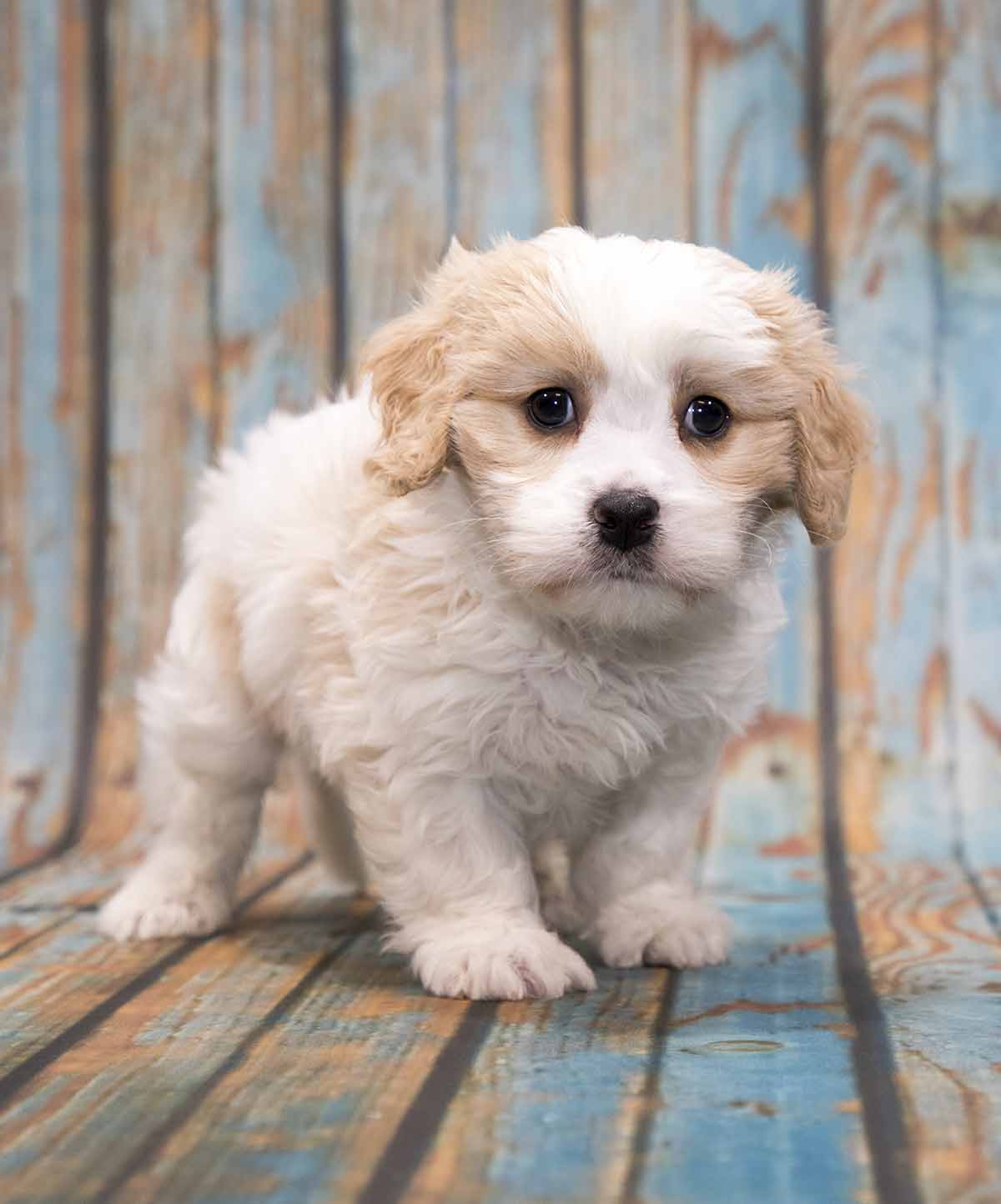
These dogs are also thought to have come to us from Australia in the 1990s.
They can make good pets for families with kids. This is because they are playful, fun, and sweet.
But there are some important health checks that the parent breeds will need if you’re considering this mix.
Cavapoo Health
If you’re considering this breed, make sure the Cavalier parent as been health checked for heart problems and syringo myelia.
Some other issues it is prone to include:
- Addison’s disease
- von Willebrand’s disease
- Legg-Calve Perthes
- Epilepsy
- Hip dysplasia
- Luxating patellas
Newfypoo
A Newfypoo is a cross between a Newfoundland and a Poodle.
This is one of the newer representatives of the Poodle mixes born in the States. So, this hybrid breed may be as recent as 2009!
One great quality of these Poodle mix breeds is that they are likely to be low-shedding. So if you suffer from allergies, you might do well with a Newfypoo.
But you may need some help from professional groomers when that coat starts to grow out!
Newfypoo Health
As always, you need to learn about the health conditions of the parents.
Some of the issues that the Newfypoo breed is prone to includes:
- Eye issues
- Hip and elbow dysplasia
- Patellar luxation
- Heart conditions
- Diabetes
- Epilepsy
To read more about these and the other health problems that can affect this breed, take a look at our complete Newfypoo guide.
Whoodle
A Whoodle is a cross between a Wheaten Terrier and a Poodle.
These Poodle mix breeds generally have a happy, playful temperament. So, they are great family dogs.

One important thing to know about the Whoodle is that the Wheaten Terrier hails from the cool climate of Ireland.
They do best in cooler climates where the risk of overheating is low.
Whoodle Health
As well as overheating, there are some other issues that the Whoodle is prone to.
These problems include:
- Thyroid issues
- Bload
- Hip dysplasia
- Protein-wasting conditions
Read more about these conditions in our Whoodle guide if you’re considering bringing this mix into your family.
Bernedoodle
A Bernedoodle is a sizable cross between a Bernese Mountain Dog and a Poodle.
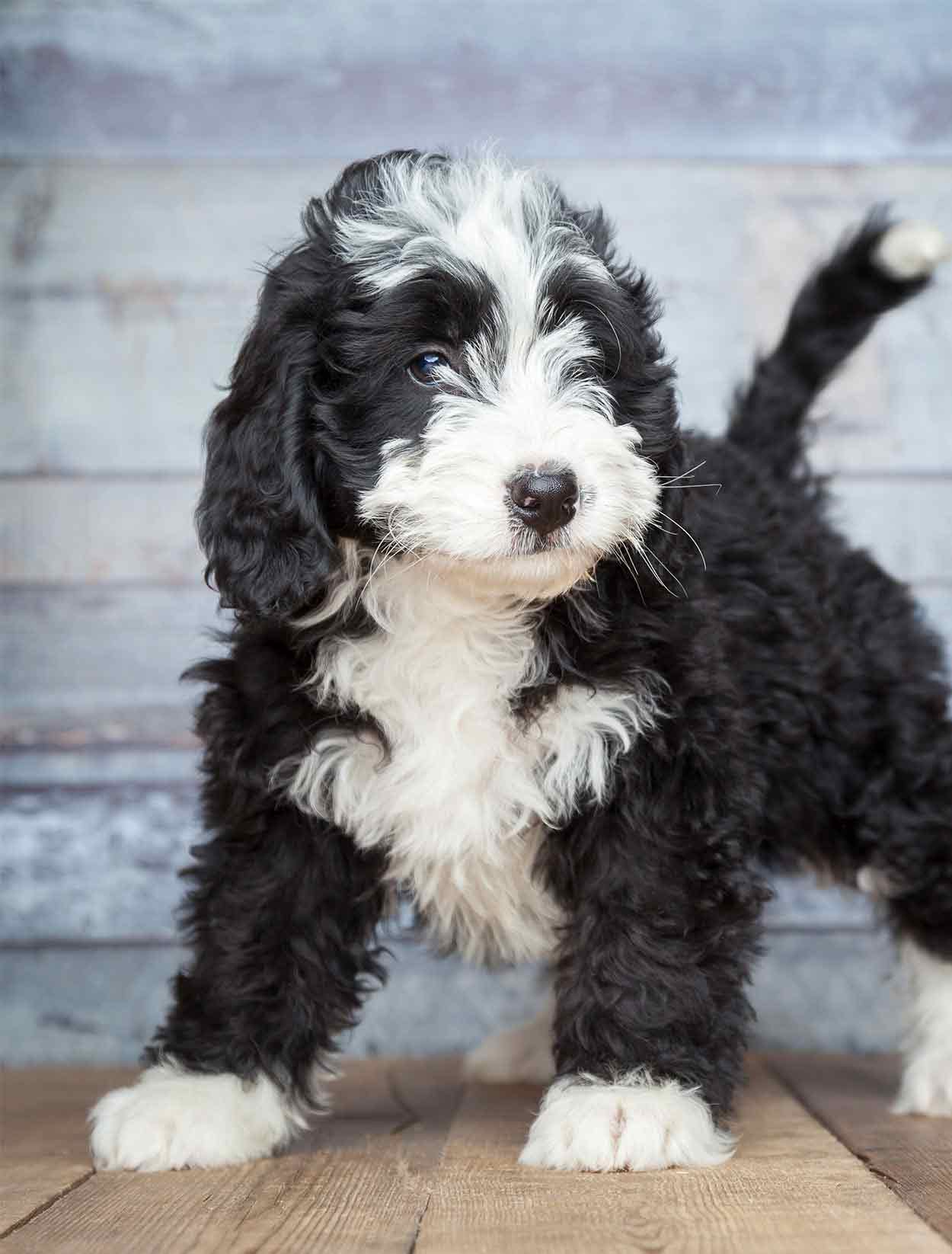
The Bernese Mountain Dog has a thick cold-climate coat. So, your Bernedoodle likely won’t tolerate heat very well, which is important to consider.
Personality-wise, you can expect the Bernedoodle to be an active, intelligent and sociable family dog. But what about its health?
Bernedoodle Health
Some of the issues that the Bernedoodle mix is prone to are:
- Epilepsy
- Hypoglycemia
- Addison’s disease
- Progressive Retinal Atrophy
- Hip dysplasia
- Bloat
Rottle
A Rottle is a cross between a Rottweiler and a Poodle.
The Rottweiler and the Poodle are neck-and-neck on the American Kennel Club’s list of most popular pet dog breeds! They come in at 8th and 7th, respectively!
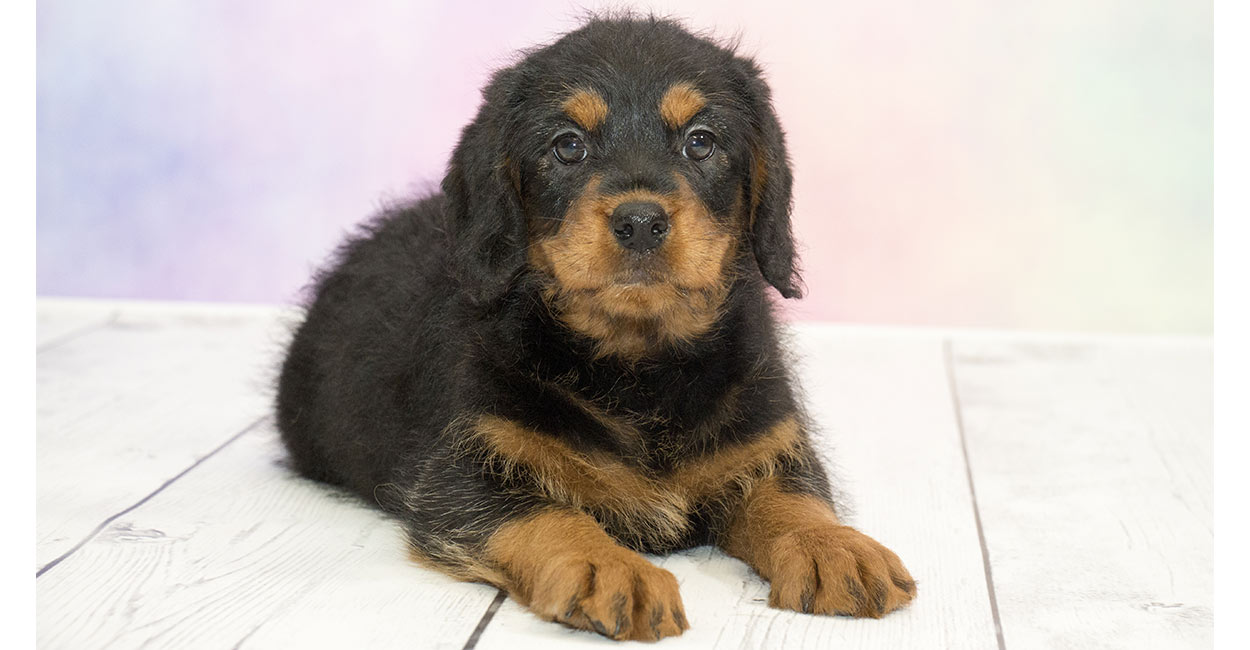
This type of the Poodle mixes will likely not shed much. They will be very bonded to “their” people and dislike alone-time.
Rottle Health
But, like any Poodle mix, they have some important health concerns.
Familiarise yourself with the following health issues before getting a Rottle:
- Hip and elbow dysplasia
- Heart conditions
- Progressive retinal atrophy
- Bone cancer
- Patellar luxation
Bordoodle
A Bordoodle is a cross between a Border Collie and a Poodle.
These Poodle mix breeds may come out favoring the high energy herding dog that is the Border Collie. Or the highly intelligent hunting dog that is the Poodle.
Either way, you are likely to get a very interesting and engaging pup!
So, what about their health concerns?
Bordoodle Health
The Bordoodle unfortunately is prone to a variety of health issues. These include:
- Epilepsy
- Hip dysplasia
- Early-onset deafness
- Exercise-induced collapse
- Collie Eye Anomaly
If you’re considering this mix, read more about their health problems here. Make sure your breeder has tested parent dogs.
Boxerdoodle
A Boxerdoodle is a cross between a Boxer and a Poodle.
Both Boxers and Poodles are top picks for service and therapy dog work. So the Boxerdoodle can be a great pet choice if you are seeking a working dog with a high drive to serve.
However, it is still a breed that will require a lot of training and socialization.
Boxerdoodle Health
Some of the health concerns that Boxerdoodle parents should learn about includes:
- Joint problems
- Bloat
- Heart problems
- Brachycephalic synrome
- Cushing’s disease
Yorkipoo
A Yorkipoo is a cross between a Yorkshire Terrier and a Poodle. Among the poodle mixes, this will be a petite pup for sure.
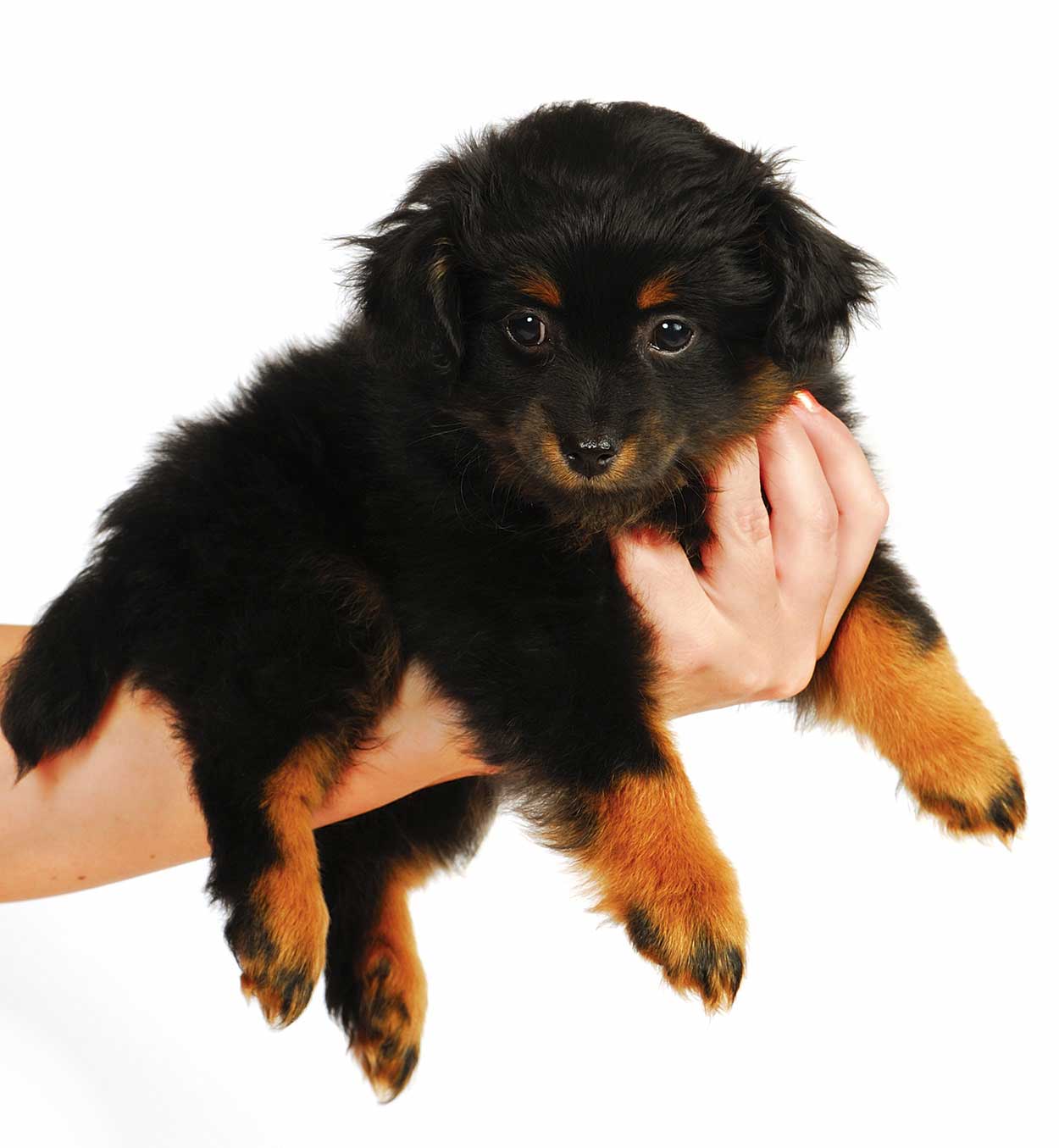
Yorkipoo dogs are likely to be lively and energetic. They will have a natural confidence that gives you the sense of a “big dog in a little dog body.”
But what health issues does this smaller breed suffer from?
Yorkipoo Health
These are popular small dogs. But if you own one, you will need to be familiar with the following problems:
- Joint disorders
- Epilepsy
- Hypothyroidism
- Eye problems
- Hypoglycemia
- Collapsed trachea
Shihpoo
A Shihpoo is a cross between a Shih Tzu and a Poodle. These are also small poodle mixes that are reportedly smart, playful, active and energetic.
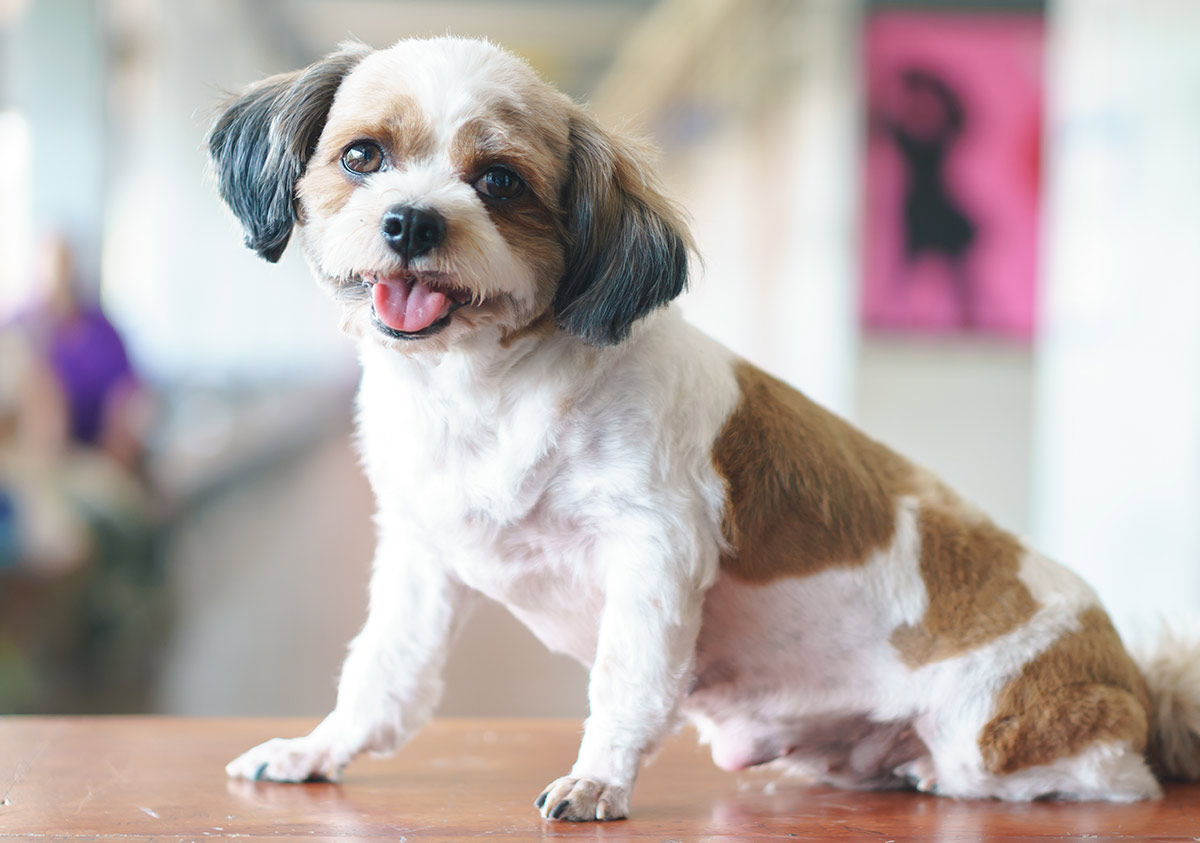
If your family includes older children, Shihpoo Poodle mix puppies can be a good addition to family life.
Shihpoo Health
So, if you’re thinking about bringing a Shih Poo into your family, let’s take a look at what health conditions to be aware of.
You should familiarise yourself with the following:
- Breathing problems (especially those with shorter muzzles)
- Eye problems
- Kidney issues
- Bladder stones
- Cushing’s disease
Schnoodle
What do you get when you cross a Schnauzer with a Poodle? A Schnoodle! And if any dog looks just like its name, this is the one!
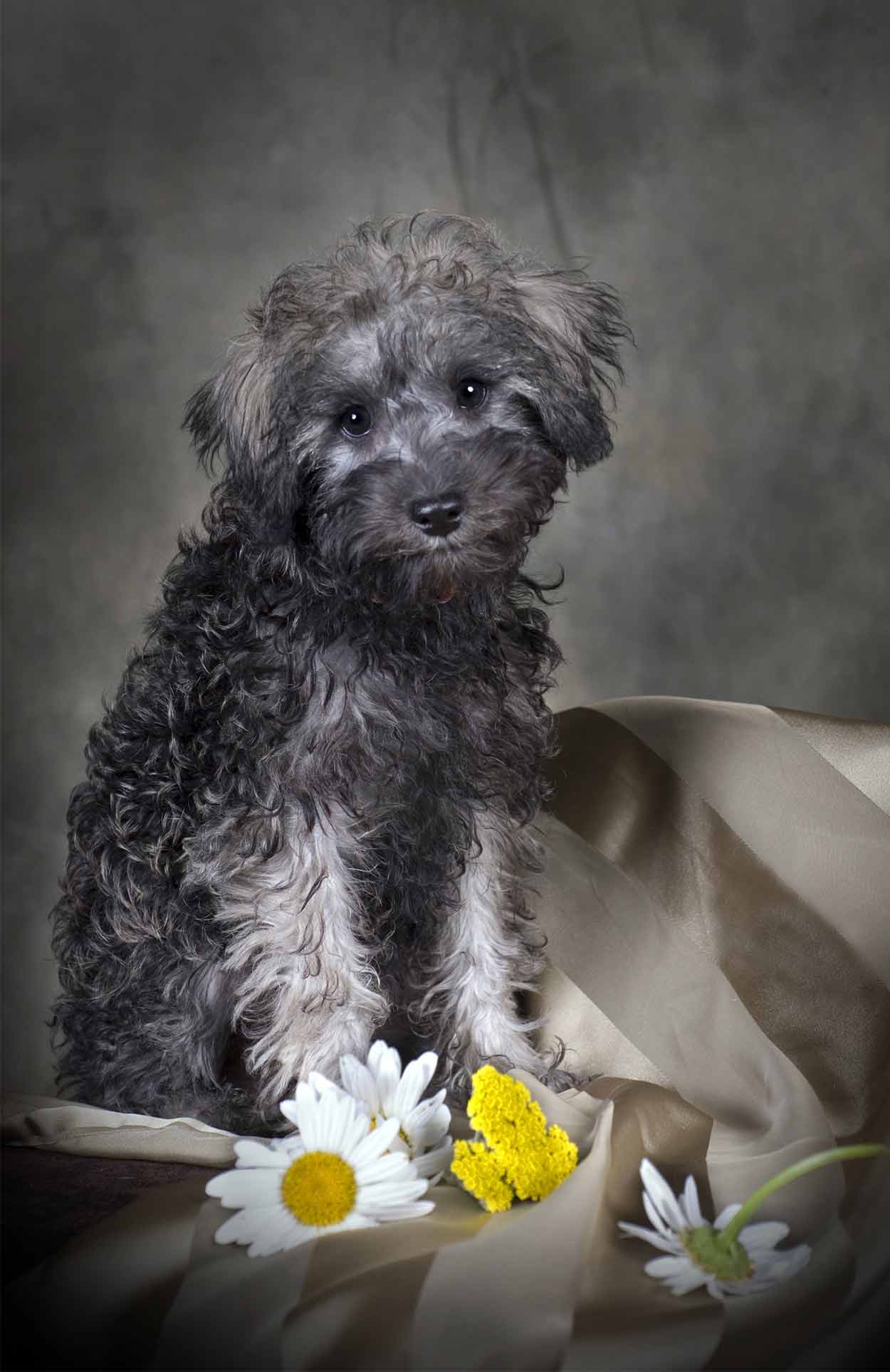
Like the Cockapoo, the Schnoodle was first bred in the 1980s. It is growing in popularity as a loving family dog.
It is available in both standard and miniature sizes.
Schnoodle Health
Schnoodles are increasingly popular dogs. But if you’re considering one, you need to be aware of the following potential health issues:
- Hip and elbow dysplasia
- Eye problems
- Heart and liver disorders
- Epilepsy
- Obesity
Peekapoo
The Peekapoo has perhaps the most adorable name out of all the poodle mixes. This dog is a cross between a Pekinese and a Poodle.
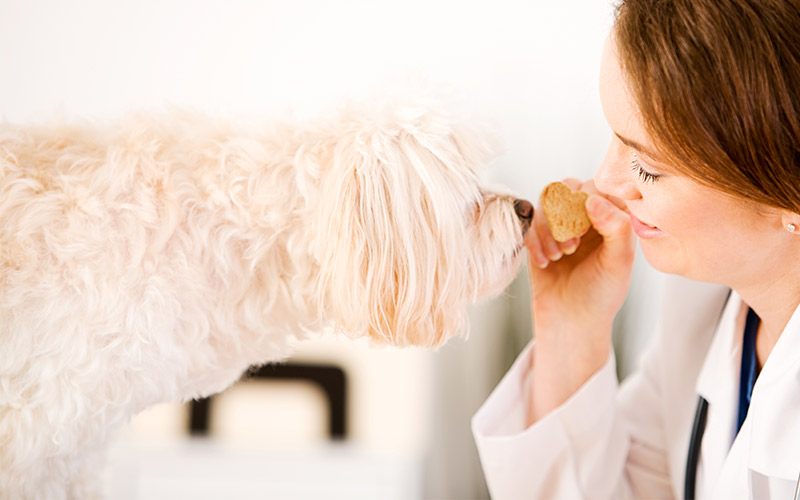
These dogs are little fluffy handfuls. They are loving and family-oriented with a natural aim for the nearest available lap.
But, because of their small size and tendency to get underfoot, these may not be the best dogs if you still have young children in the house.
Peekapoo Health
So, as smaller dogs, the Peekapoo needs some additional care. We’ve seen they aren’t always the best with younger children, as they are very fragile.
But you should also read up on the following problems:
- Brachycephalic obstructive airway syndrome
- Overheating
- Eye problems
- Dental issues
These problems come from the Pekingese parent. They can be reduced by choosing a dog with a longer muzzle. However, many Peekapoos will inherit the brachycephalic problems of their Pekingese parent. So, you may be better choosing a different small Poodle mix.
Chipoo
The Chipoo is a more recent addition to the popular Poodle mixes. This dog is the result of a miniature Poodle mix crossed with a Chihuahua.
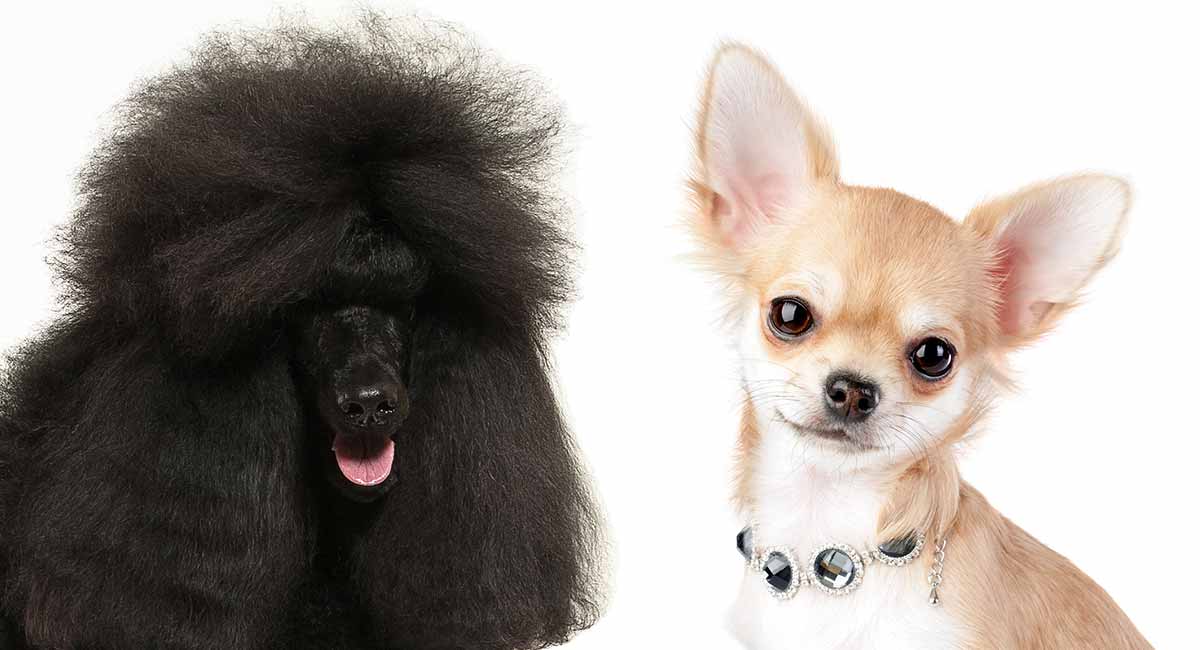
The Chipoo is likely to inherit the natural confidence and leadership drive of both parent dogs. This means these dogs are not likely to ever actually realize they are small!
The Chipoo will do well in a family with older children that has a lot of time to spend with their dog.
Chipoo Health
The Chipoo, like every other Poodle mix we’ve seen, is prone to certain health issues. Take a look at a few of these below:
- Patellar luxation
- Glaucoma
- Cataracts
- Stomach problems
- Overactive tear gland
So Much Choice! So Many Curls
As you can see there are many different Doodles to pick from. And that gorgeous curly coat is a big feature of them all.
Remember, not all poodle mixes are hypoallergenic. In fact no dog is truly hypoallergenic. Though some dogs shed less hair and produce less of the protein that triggers allergies in people, than others. You can read more about this fascinating topic in our article on hypoallergenic dogs.
Some Doodles will take after their Poodle parent. But some will be more like the non-Poodle parent. And no-one can predict which puppy will be least likely to trigger allergies in sensitive people. One thing that helps to reduce shedding is a coat with tighter curls. That’s because the loose hair gets trapped in their fur, rather than floating around your home.
If you are sensitive to dog fur, its important to spend time with some Poodles and Poodle mixes to see if these dogs trigger a reaction in you, before committing to a puppy.
Remember too that these coats are high maintenance. Many of the Poodle mixes that end up in animal shelters have very neglected coats. You can’t just let those curls run wild, or they start to make dense fur matts so regular grooming is essential.
List Of Top 50 Poodle Mix Breeds:
Delve into Doodles! Fifty fantastic Poodle mix breeds for you to explore! Click on the links below
Which poodle mixes are best?
If you live in a small apartment and don’t have a great deal of time for exercising your dog, one of the smaller poodle mixes such as a Yorkipoo, is likely to suit you better. However, be careful of smaller breeds that could inherit brachycephalic problems, like the Peekapoo.
For those with a tendency to allergies, a mix where the other parent is also low shedding – a Schnoodle for example – may give you a better chance of a low shedding puppy.
But remember, there are no absolutely hypoallergenic dogs. Some allergic people cannot tolerate the close presence of any dog.
For active families with older children the fun loving Labradoodle is a great choice. These dogs usually enjoy long walks, swimming, and fetching a ball.
Remember that Poodle mix puppies with flat faced breeds may suffer from breathing problems. For a healthy dog that can cool itself well in warm weather always opt for a dog with some length to its muzzle.
Which Poodle mix do you prefer?
Do you have a preference for a certain Poodle mix? Let us know in the comments box below!
If you’ve decided on a small Poodle mix, make sure you check out our small dog names guide!
Resources
Pepelko, K., “‘I’ve Done a Lot of Damage,’ Says Creator of the First Designer Dog,” One Green Planet, 2014.
Buzhardt, L., DVM, “Designer Dog Breeds,” VCA Animal Hospital, 2016.
Mooallem, J., “Designer Dog-Fights: The Modern Kennel Conundrum,” 2007.
Adams, J., et al, “Genetics of Dog Breeding,” Scitable by Nature, 2008.
COC, “All About Cockapoos,” Cockapoo Owners Club UK, 2015.

Mary Ellen says
They cost a lot because, from an established, conscienicous breeder, both parents are purebreds, with researched bloodlines, strong family lines, and puppies come with vet checks, guarantees, and return policies. They come with socialization started early, some with house breaking already started, and are not separated from their moms too early. There is a ton of work going into getting you a good, strong, healthy pet that you will enjoy for years. I look on my F1 Bernedoodle as a purebred Bernedoodle. Both parents are purebreds, and he was bred intentionally, to have the best traits of both parents. Every breed started by the AKC or Canadian Kennel Club started somewhere! He is NOT a mutt. He might be called a designer dog right now, but as doodles increase in popularity, they will hopefully become an established, recognized breed.
Mary Ellen says
I have a BIG 95 pound standard Bernedoodle, who is the love of our lives. He is sweet, kind, gentle, playful, laid back and mellow, minimally shedding and goofy. He does have a bit of a stubborn streak, though. Everybody on our street knows him and calls him a gentle giant. He has a very active social life (better than mine!), and dog-loving friends call us to make play-dates with him. I wouldn’t trade him for the world. Everybody in my family says he is the best money we have ever spent.
Marlene McMillan says
Do you have any Jackadoodle puppies or a breeder I can talk too to buy one. Thank you marlene
Judy cannon says
We lost our 14 yrs pipper. Its hard still have her bed. I iive in Hubbard tx. I have found this is the love i would like to find
Laurie says
I have a 5 yr old Golden doodle. I love her to death. I’d like to get a Mini Golden Doodle but am afraid it may be prone to barking. What experience have others had?
Donna says
I have a Schnoodle, the sweetest smartest dog I ever had..love and adore my boy Wally
Dorothy says
Well where is the Tea Cup Toy Poodle,I have one and Love Her so so much.?????
April says
I have had two Standards Poodles and now have a Moyen. Without a doubt the best dog you could have!
Joanne says
Enjoyed hearing this. We are waiting to meet our new Moyen puppy Tucker in a few more weeks. We are getting excited.